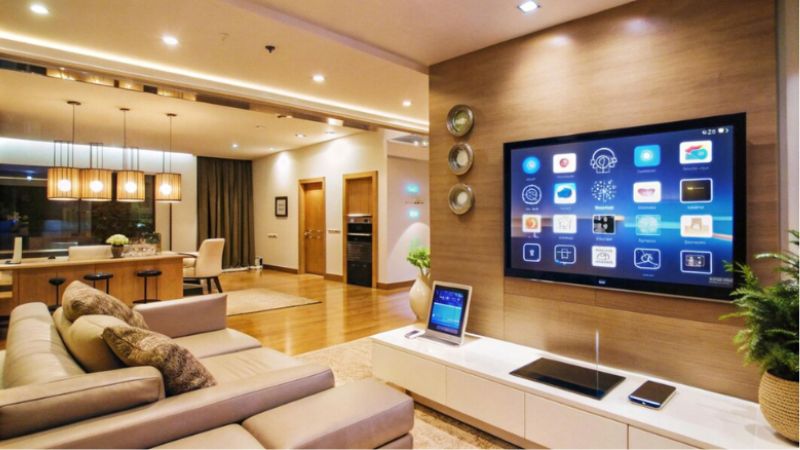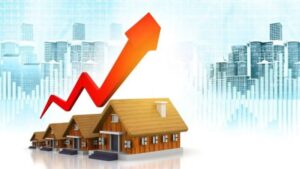What Is a Smart Home?
In today’s world, smart home technology has transformed the way individuals interact with their living spaces. A smart home uses internet-connected devices to automate and control household functions like lighting, security, climate, and entertainment. Even simpler homes can integrate this technology through apps or voice assistants, providing a new level of convenience, customization, and peace of mind. Whether you’re planning to settle in a modern home or looking to update your current residence, consulting local experts like the Middleton WI real estate experts Aaron Weber Group can help you find properties that are smart home–ready, ensuring you can immediately enjoy the benefits of a connected lifestyle.
Not only do these innovations improve daily routines, but they also provide value for homeowners looking to maximize efficiency and property appeal. Smart homes aren’t just a trend—they’re the new standard for a more responsive, energy-efficient, and secure living experience.
Table of Contents
Popular Smart Home Devices
The smart home ecosystem is a growing collection of devices designed to streamline household management. Smart thermostats, such as the Nest Learning Thermostat, automatically adjust temperatures based on user preferences, offering comfort and energy savings. Meanwhile, voice assistants like Amazon Alexa and Google Assistant control lights, locks, and appliances with simple commands. Philips Hue offers smart lighting systems that allow users to set schedules and change light colors. Smart plugs are an affordable entry point for beginners, allowing them to control traditional appliances through their phone. Demand for these gadgets is increasing as people seek a balance between convenience, efficiency, and home value.
Making Smart Homes Secure
Connected homes require secure devices and data. Setting unique passwords for each device, enabling two-factor authentication, and regularly updating firmware and software are crucial steps. Enabling network encryption and a robust password protects devices from hackers. These precautions ensure privacy and protect valuable information, allowing families and remote workers to enjoy the benefits of smart technology with confidence. Manufacturers often release security patches to address vulnerabilities.

Energy Savings and Sustainability
Smart home technology not only enhances comfort but also promotes eco-friendliness. Automated thermostats optimize heating and cooling, reducing energy consumption. Smart power strips and plugs minimize phantom energy use from plugged-in devices. The U.S. Department of Energy reports that smart home energy management can save 10-15% on heating and cooling bills annually, reducing utility bills and carbon footprint, making smart homes a crucial part of a sustainable future.
Smart Tech for Every Family
Smart devices offer numerous benefits to families, including security features for parents, automated feeders and cameras for pet owners, and voice assistants for older adults. These devices allow for secure access, monitoring of children’s home arrivals, and reminders for medication. They also provide peace of mind for caregivers and seniors, proving that smart tech can enhance routines and safety for all household members, regardless of age or stage in life.
Costs and Considerations
The cost of investing in smart technology depends on the level of automation and the chosen devices. Entry-level products like smart bulbs are affordable for trial runs, while professional-grade systems or comprehensive automation packages can increase costs. It’s advisable to start with lighting or security and gradually expand as you become comfortable with the technology. Additionally, installation costs and a reliable Wi-Fi network are crucial factors when upgrading your home.
Future Trends in Smart Homes
The future of smart homes is expected to see increased interoperability and intelligent automation, with artificial intelligence enabling devices to learn habits and adjust without manual intervention. Voice controls will become conversational, integrating complex commands across devices. Open-source platforms and unified standards will facilitate the mixing and matching of devices from different brands, benefiting homeowners and real estate professionals. The expansion of connected devices also opens up new possibilities in home health monitoring, sustainable living, and family safety.
Conclusion
Smart home living is a lifestyle that combines comfort, efficiency, and security. With innovations like energy-saving systems, voice-controlled assistants, and connected security features, homeowners can customize their spaces. Staying updated on trends and adopting value-adding technologies ensures your smart home grows with you. By making thoughtful choices and balancing innovation with practicality, you can enjoy a connected lifestyle that enhances your daily routine and long-term peace of mind.



